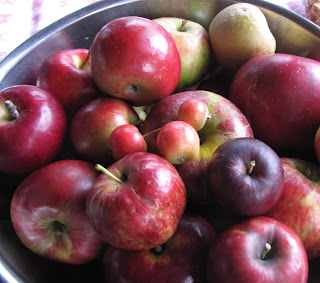I never realized there is a day set aside on the calendar each year to celebrate apple cider. But there is and it's November 18.
From The National Holiday website: "Apple Cider Day is celebrated on November 18 every year. The day celebrates the rich and fruity beverage that fills our hearts and bodies with warmth. They say an apple a day keeps the doctor away, but a glass of apple cider at the end of a long day can rejuvenate the soul. Apple cider is made from freshly harvested apples that are mashed and made to resemble applesauce. This is then pressed to extract fresh juice."
And what's the number one way to celebrate this "holiday"? Again from the website:
- Buy Cider From A Local FarmSupport local farmers. Ditch the 'cool' brands and buy your cider from a local farmer
- We're celebrating National Cider Day (only a day late!) by offering for sale the final pressing of our own apple cider, lovingly crafted from organic apples grown right here on Crandall Hill in the wilds of Potter County. We'll be at the Potter County Farmers' Market on Saturday, November 19 from 10 a.m. to 2 p.m. and encourage you to stop by to sample our unique blend. Of course, in doing so, we are hoping to coax you to buy a gallon or two.
- The Market has moved inside for the cold months and vendors set up in the Riley Gallery on Main Street in downtown Coudersport (next to the Hotel Crittenden).
- We've always sold out of cider and this pressing is smaller than others so it's best to reserve your cider in advance by calling (814) 274-8004 or sending us an email. If you can't make it to the market, you can arrange to pick up the cider at the farm.
.jpg)

































.jpg)













